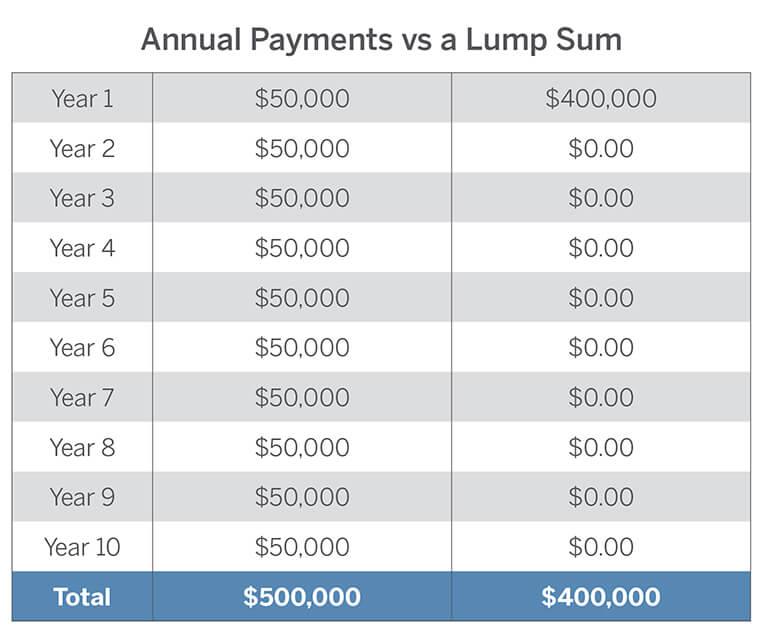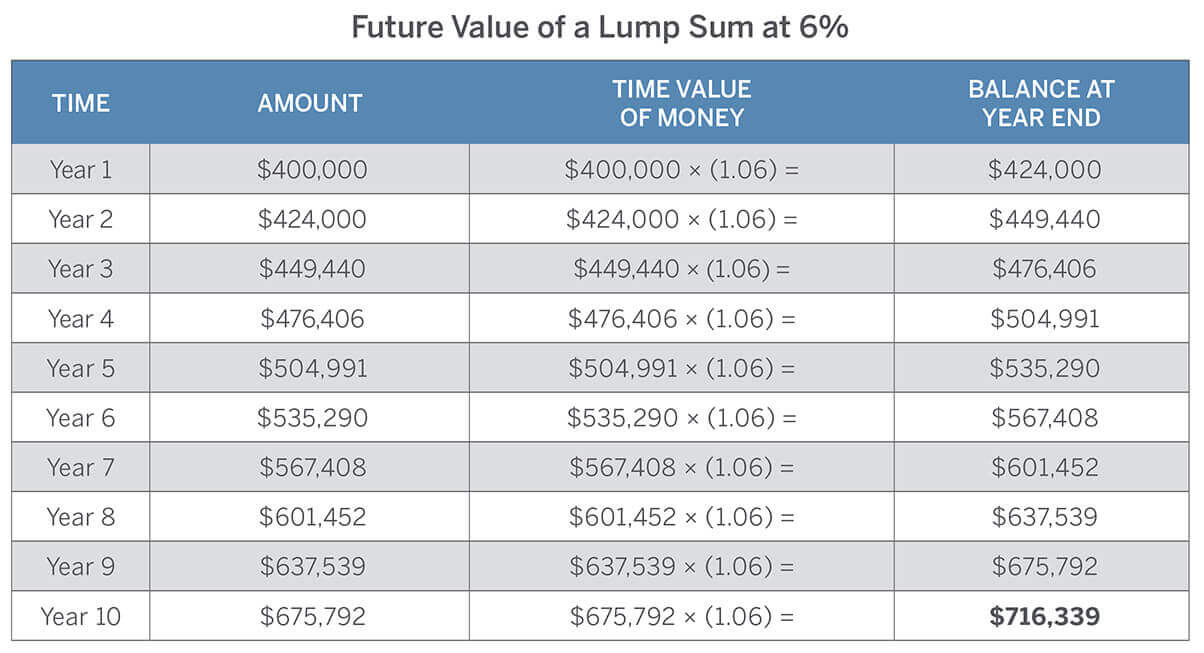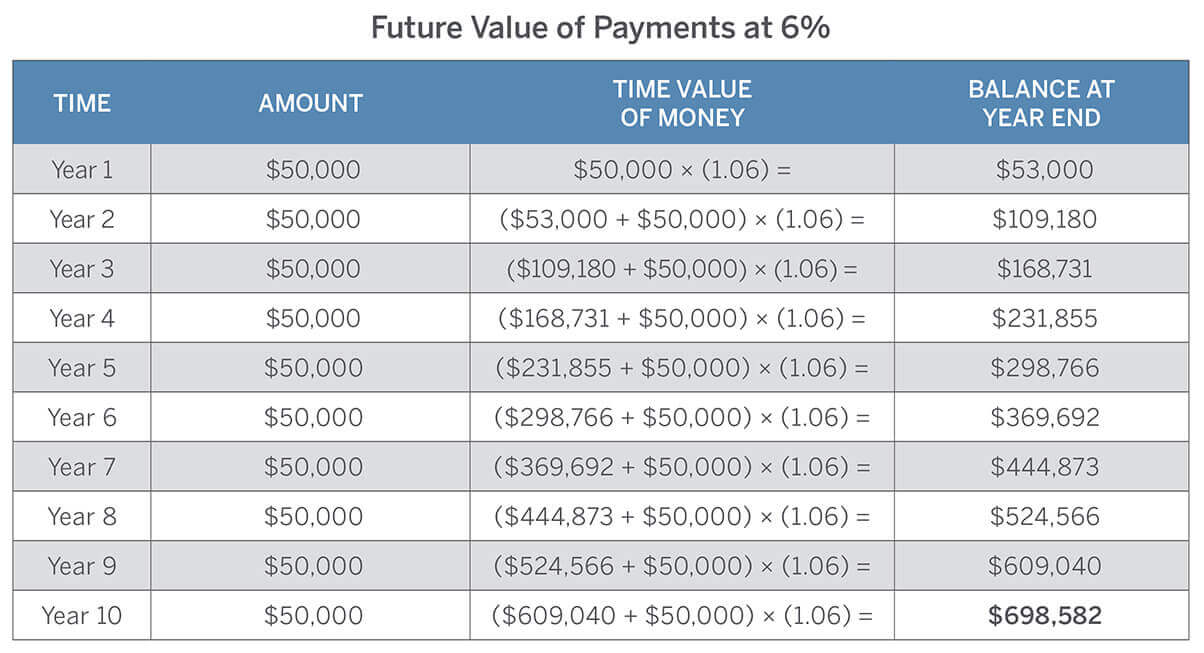What does ‘the time value of money’ mean?
The time value of money means that a dollar received today may be worth more than the same dollar received in the future. The reason for this is that a dollar received today can be invested. It can earn a return.
What Does Time Have to do With the Value of Money?
The longer the timeframe, the more opportunity money has to accumulate earnings. So, the sooner you get your money invested, the longer it has to work for you!
To illustrate how a dollar received today is worth more than one you get in the future, consider the way a typical lottery payout works. Jackpot winners are given a choice between taking the full prize over time or accepting a smaller “lump sum” right up front.
Assume a lottery jackpot of $500,000. The payout options are a lump sum of $400,000 today or annual payments of $50,000 for 10 years.

The decision appears obvious, right? $500,000 is more than $400,000.
In simple terms, there are just a couple things you might do with these lottery winnings.i You could spend them. Or you could invest them.
If you spend the money over time (like 10 years) those dollars will lose value. Their purchasing power will be reduced as prices rise over time. The money will buy less in the future than it buys today. But what happens if the money is invested?
The Value of Money Over Time
Assume you take the (smaller) lump sum. But, instead of spending it, you invest it. Assume too that your investment earns an average annual return of six percent.ii
The six percent earned in year one increases year two’s beginning balance. Those dollars earn an additional six percent and increase what you have at the beginning of year three. This continues for as long as you keep the money invested.
Here’s what that looks like after 10 years.

Your $400,000 grows to more than $716,000. This growth is the result of compounding – the return earned on your investment’s previous returns.
All of a sudden, this is looking more interesting than waiting 10 years for the $500,000.
But bear in mind that each of those annual payments can also be invested. They can also benefit from compounding. And at the end of 10 years, they will accumulate to more than the sum of the individual payments.

But as the table above illustrates, investing the annual payments at the same six percent isn’t enough to match the balance accumulated by the lump sum. This is because the lump sum has a head start ($400,000 vs. $50,000).
In fact, it takes about seven years for the annual payments (and compound returns) to reach $400,000. By then, the lump sum has earned well over $200,000. The annual payments can’t catch up.
And that’s the whole point of the time value of money. The sooner you can get a dollar invested, the more opportunity there is for compounding. So, time is on your side. The more you have of it, the better.
Putting the Time Value of Money to Work
For an investor, time really is of the essence. So, if you haven’t already, now would be a great time to start investing.
To learn more about how to put the time value of money to work for you, call us at (800) 235-8396.








